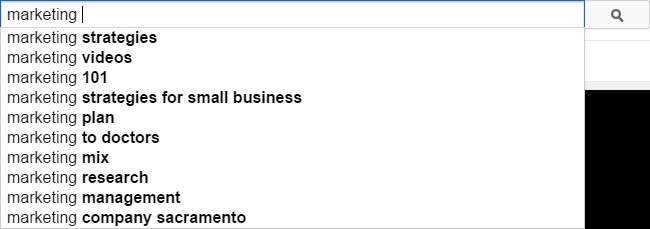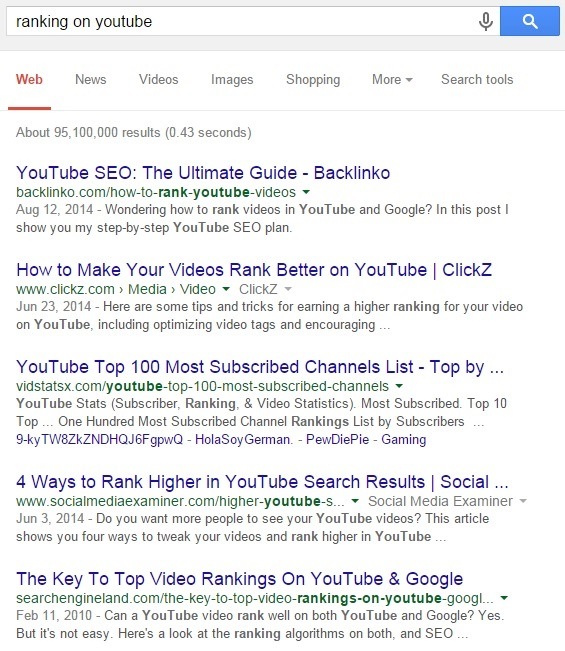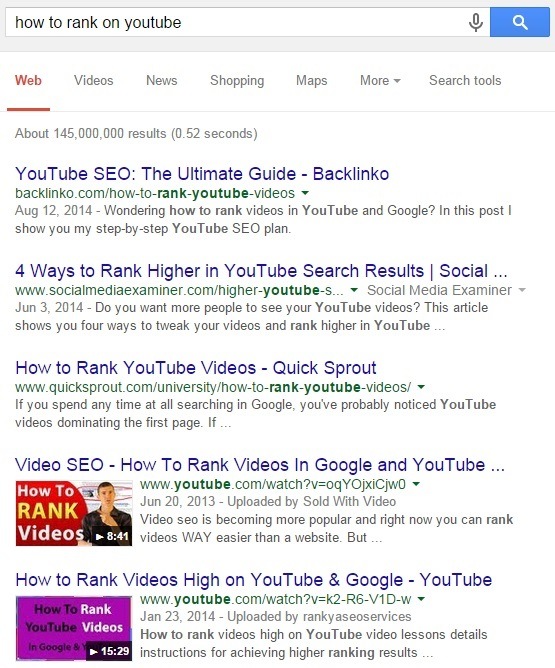SEO Tips for YouTube Videos
Marketers today know that creating quality content is one of the best ways to attract traffic and leads, and that “content” no longer simply refers to text. The term encompasses a wide variety of mediums, and one of the more popular is video.
Most content creators host their videos on YouTube, which is the second-largest search engine (behind Google, of course), with 1 billion unique monthly visitors. The huge volume of traffic makes this a great platform, but also makes it challenging to be found among the billions of other videos. So how can you make sure that the hours you spend creating a video aren’t for nothing?
YouTube’s search tool is how most users find videos, and much like Google, it returns results based on a complex algorithm. Although it is impossible to know exactly how YouTube determines its results, it is possible to optimize your videos for better chances of ranking well – a process called search engine optimization, or SEO.
Choosing Keywords
Much like SEO for a regular website, you have to start by choosing keywords for your video. These keywords need to be relevant to the content in your video, but there are a few ways to make sure that the exact words and phrases you use will attract searches and traffic.
Use YouTube’s Auto-Suggest
One of the best ways to find keywords for your videos is to start typing a keyword idea into YouTube’s search bar and see what is auto-suggested. For example, let’s say I wanted to make a marketing video but wasn’t sure what people would be interested in watching.

By simply typing “marketing” into the search bar, I can see what phrases users are searching for that relate to marketing. Although you won’t necessarily have the expertise or resources to create videos on every topic YouTube suggests, you should get at least one or two decent ideas for long-tail keywords.
Video Keywords
The majority of your traffic will likely come directly from YouTube searches, but it is also possible to rank in Google for certain topics. When choosing keywords for your video, try performing Google searches for related terms and phrases to see if any of them produce video results.
For example, let’s say I was discussing SEO tips for YouTube in video form instead of this blog post. A Google search for “ranking on youtube” returned the following results:

All of the results are articles. But a search for “how to rank on youtube” showed slightly different results:

In this case, there are two video results directly from YouTube. That means that a video titled “How to Rank on YouTube” has a much better chance of ranking in Google than a video called “Ranking on YouTube.” This would open it up to a much larger audience than just YouTube searchers.
There is no exact formula for choosing keywords that will display video results, but Google tends to include them for searches related to how-tos, reviews, tutorials, and funny videos – all popular topics for video format. And while it isn’t likely that every one of your videos is going to relate to a keyword that displays video results in Google, it’s certainly worth testing a few different ideas.
Using Keywords
Now that you have your keywords, where do you put them? Much like SEO for a website, you’ll want to include them wherever relevant. And although there hasn’t been nearly as much research about SEO for YouTube as larger search engines (like Google), here are the elements to consider:
Video title
The most obvious place to include keywords is in the title of your video. This is what people will look at first when scanning through the results, and it will likely be the determining factor in whether or not they choose to click on it.
YouTube suggests that you include keywords towards the beginning of your title. This is especially important for mobile searches, as long titles could easily be cut off and you don’t want searchers to miss key terms. For this reason, your titles should also be relatively concise.
Description
When uploading your video, you’ll be given the option to write a description. Most users only write a sentence or so but don’t follow their lead. Search engines can’t watch videos, so they rely on the text around them to determine what they are about.
In order to help YouTube understand your video, you’ll want to include a few relevant keywords. You should obviously avoid keyword stuffing, but don’t be afraid to write long descriptions.
Tags
YouTube also allows you to add tags to your videos, which can be another helpful place to include keywords.

These tags are not visible to viewers, but can help YouTube determine which suggested videos to display in users’ sidebars as they view other videos. This means that using appropriate tags can help users watching similar videos find yours.
Encourage Engagement
In addition to incorporating keywords, you should also be sure to encourage your viewers to engage with your videos. YouTube determines how worthy your video is of a high ranking based on how other users react to it, so positive feedback means a better chance of reaching more viewers. So what should you take into consideration?
How long people watch your video
One of the simplest ways for YouTube to determine whether or not your video is worthy of showing to its users is how long viewers typically watch. If the users who find it typically go back to the search results or click on another video within seconds, your rankings may suffer.
The obvious solution here is to create and upload videos that users will find interesting and worth watching. If you create high-quality content, this factor will take care of itself.
Thumbs up or thumbs down
Another user-based signal YouTube looks at is the number of times viewers click “thumbs up” and “thumbs down” on each video.

A “thumbs up” basically operates just like a “like” on Facebook, while each “thumbs down” shows the opposite sentiment. Although this will largely depend on whether or not viewers enjoy your videos, you may want to consider encouraging them to click “like” towards the end. Many successful “YouTubers” use this strategy, and it can often be the push users need to even think about taking action.
Comments
Comments are also a positive signal to YouTube, as they demonstrate that users find your video worth discussing. By choosing topics that tend to inspire conversation, you can increase the likelihood that users will comment.
Social shares
YouTube offers built-in sharing tools for all videos, which makes improving this ranking factor relatively easy.
Although there isn’t much you can do to ensure that viewers will share your videos with their friends (aside from creating videos worth sharing!), you should share your videos to your other social channels as you create them. Social media is a great tool for promoting any kind of content, and videos are no exception.
Subscribers
 In addition to asking viewers to give your video a thumbs up, you also shouldn’t be afraid to directly ask viewers to subscribe at the end of your video.
In addition to asking viewers to give your video a thumbs up, you also shouldn’t be afraid to directly ask viewers to subscribe at the end of your video.
If someone likes your video so much that they decide to subscribe to everything you upload, that’s a hugely positive signal to YouTube.
Start filming!
These strategies will help your videos receive more initial traffic, but it’s important to remember that even the best promotional strategies won’t work if your video is not interesting. Focus first on creating quality content, then use the strategies I’ve discussed to drive rankings and engagement.
If you have any questions about optimizing your videos, or SEO tips for YouTube of your own, please let me know in the comments below!